Let’s say you do not want users to set Microsoft Edge as the default browser on your computer. If so, you can follow this article to prevent or stop Microsoft Edge from checking if it is the default browser by displaying the Prompt on Windows 11 and Windows 10 computers. You can do that using Local Group Policy Editor and Registry Editor.
How to stop Edge from asking to be default browser in Windows 11/10
To stop Edge from asking to be default browser in Windows 11/10, follow these steps:
- Open the Microsoft Edge browser.
- Find the message related to Edge being the default browser.
- Click on the Not now button.
- Close the browser.
- Re-open Edge and repeat the same steps two more times.
To learn more about these steps, continue reading.
To get started, open the Microsoft Edge browser and find the message related to Edge being the default browser. It always displays the message at the top of the browser. You need to click on the Not now button.
Then, close the browser and re-open it. Once done, repeat the same steps two more times. After clicking on the Not now button thrice, Edge will stop asking to be the default browser.
Edge can show the same pop-up message again when you update or reset the browser. In that case, you need to follow the steps again. Also, you may find a cross icon alongside the Not now button. Clicking on that icon does the same thing.
Disable it via Edge Flags
Folks have also found this useful to stop Edge from asking to be default browser in Windows 11:
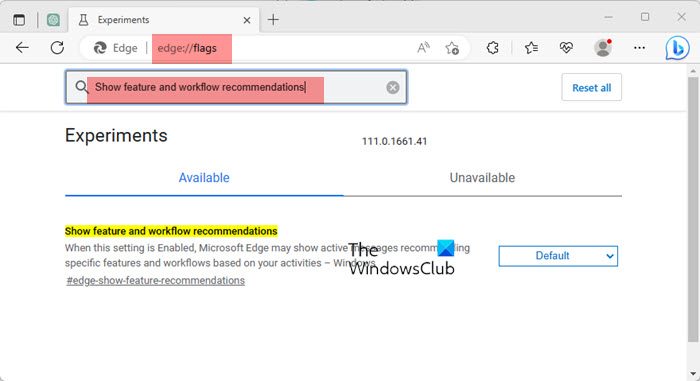
- Open Edge browser
- Type edge://flags and hit Enter
- Search for Show feature and workflow recommendations
- Select Disabled from the drop-down menu
- Restart Edge.
If you are using Windows 7, you can follow the below guide.
How to prevent Microsoft Edge from being the default browser using Registry
To prevent Microsoft Edge from being the default browser using Registry, follow these steps:
- Search for registry editor in the Taskbar search box.
- Click on the search result.
- Go to Microsoft in HKCU.
- Right-click on Microsoft > New > Key and name it as Edge.
- Right-click on Edge > New > DWORD (32-bit) Value.
- Set the name as DefaultBrowserSettingEnabled.
- Keep the Value data as 0.
- Restart your PC.
Let’s check out these steps in detail to learn more.
Open the Registry Editor on your computer. To do that, search for registry editor in the Taskbar search box and click on the search result.
Then, go to the following path:
HKEY_CURRENT_USER\Software\Policies\Microsoft
Right-click on Microsoft > New > Key and name it Edge.
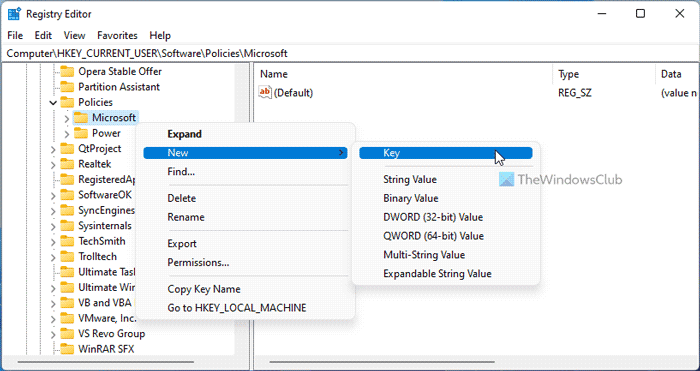
Right-click on the Edge key, select New > DWORD (32-bit) Value, and set the name as DefaultBrowserSettingEnabled.
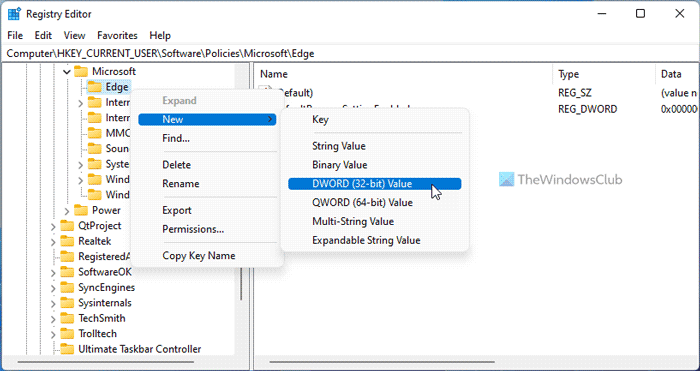
By default, it has a Value data of 0, and you need to keep that Value data in order to prevent Edge from being the default browser. If so, restart your computer.
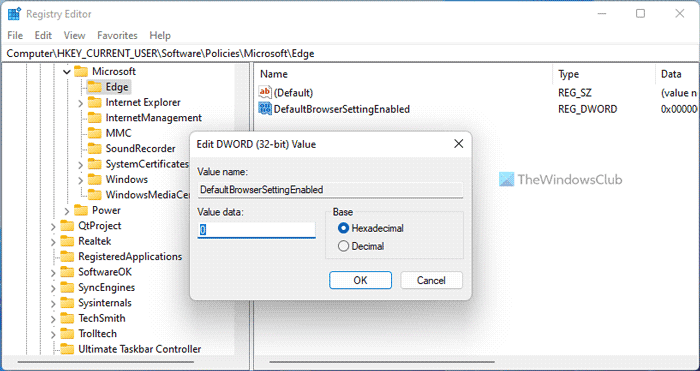
However, if you want to allow Edge to be the default browser, you need to set the Value data as 1. Alternatively, you can delete this REG_DWORD value. For that, right-click on the DefaultBrowserSettingEnabled, select the Delete option and click the Yes button.
TIP: This post will show you how to Turn off the Default Browser Prompt in Chrome or Firefox
Stop Edge from asking to be default browser in Windows 7
To stop Edge from asking to be default browser by displaying the Prompt in Windows 7, follow these steps:
- Press Win+R to open the Run prompt.
- Type gpedit.msc and click the OK button.
- Go to Microsoft Edge in User Configuration.
- Double-click on Set Microsoft Edge as default browser setting.
- Choose the Disabled option.
- Click the OK button.
- Restart your computer.
Let’s delve into these steps in detail.
Open the Local Group Policy Editor. For that, press Win+R to open the Run dialog, type gpedit.msc, and click the OK button.
Then, you need to navigate to this path:
User Configuration > Administrative Templates > Microsoft Edge
Here you can find a setting called Set Microsoft Edge as default browser. You need to double-click on this setting and choose the Disabled option.
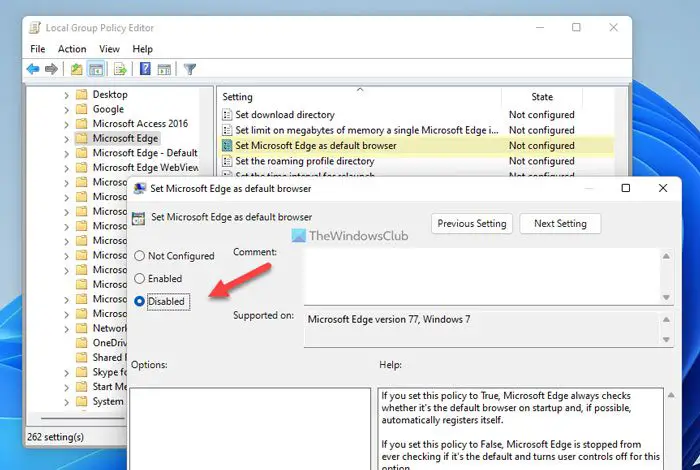
Then, click the OK button to save the change. At last, you need to restart your computer.
If you set this policy to True, Microsoft Edge always checks whether it’s the default browser on startup and, if possible, automatically registers itself.
If you set this policy to False, Microsoft Edge is stopped from ever checking if it’s the default and turns user controls off for this option.
If you don’t set this policy, Microsoft Edge lets users control whether it’s the default and, if not, whether user notifications should appear.
Note for Windows administrators: This policy only works for PCs running Windows 7. For later versions of Windows, you have to deploy a “default application associations” file that makes Microsoft Edge the handler for the https and http protocols (and, optionally, the ftp protocol and file formats such as .html, .htm, .pdf, .svg, .webp). See https://go.microsoft.com/fwlink/?linkid=2094932 for more information.
If you want to go back to the original setting, you need to open the Local Group Policy Editor, double-click on the same setting, and choose the Not Configured option.
This tip will be useful if Windows keeps changing the default browser.
How do I stop Edge from being my default browser?
To stop Microsoft Edge from being your default browser, you must use this guide. In the Local Group Policy Editor, you need to open the Set Microsoft Edge as default browser setting. Then, choose the Disabled option and click the OK button. Similarly, you can use the Registry Editor to do the same.
Read: Windows keeps changing the default browser
How do I default to Chrome instead of Microsoft Edge?
To change the default browser to Google Chrome in Windows 11, you can follow this guide. You can also use MSEdgeRedirect to change the default browser in Windows 11. If you want to stop Edge from being the default browser, you need to take the help of the Local Group Policy Editor or Registry Editor, as said earlier.
That’s all! Hope these guides helped you.
Read: How to change default browser when opening hyperlink in Excel.
Leave a Reply